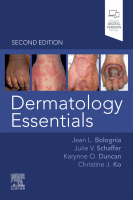Physical Address
304 North Cardinal St.
Dorchester Center, MA 02124

A mosaic organism is composed of ≥2 genetically distinct cell populations derived from a homogeneous zygote. – Genomic mosaicism results from alteration in the DNA sequence, affecting genes or chromosomes – Functional (epigenetic) mosaicism results from changes in gene expression…

You’re Reading a Preview Become a Clinical Tree membership for Full access and enjoy Unlimited articles Become membership If you are a member. Log in here

You’re Reading a Preview Become a Clinical Tree membership for Full access and enjoy Unlimited articles Become membership If you are a member. Log in here

You’re Reading a Preview Become a Clinical Tree membership for Full access and enjoy Unlimited articles Become membership If you are a member. Log in here

You’re Reading a Preview Become a Clinical Tree membership for Full access and enjoy Unlimited articles Become membership If you are a member. Log in here

Ichthyoses and erythrokeratodermas represent a diverse group of disorders of cornification, which are characterized by a defective epidermal barrier due to abnormal differentiation and/or desquamation of keratinocytes. Ichthyoses feature diffuse scaling of the skin, often in a widespread distribution, whereas…

Introduction Recognizing the skin signs of systemic disease is an important aspect of dermatology; however, the vast number of cutaneous manifestations, combined with the infrequency with which each sign is encountered, can be daunting. The approach in this chapter is…

You’re Reading a Preview Become a Clinical Tree membership for Full access and enjoy Unlimited articles Become membership If you are a member. Log in here

Malnutrition Poor nutrition resulting from an insufficient or poorly balanced diet or from defective digestion or utilization of foods. Malnutrition encompasses both deficiencies and excesses (e.g. obesity) ( Fig. 43.1 ; Tables 43.1 and 43.2 ). Table 43.1 Malnutrition-deficiency syndromes…

There are four major forms of cutaneous calcification (calcinosis cutis): (1) dystrophic – locally within sites of pre-existing skin damage; (2) metastatic – due to systemic metabolic derangements; (3) iatrogenic – secondary to medical treatment or testing; and (4) idiopathic…